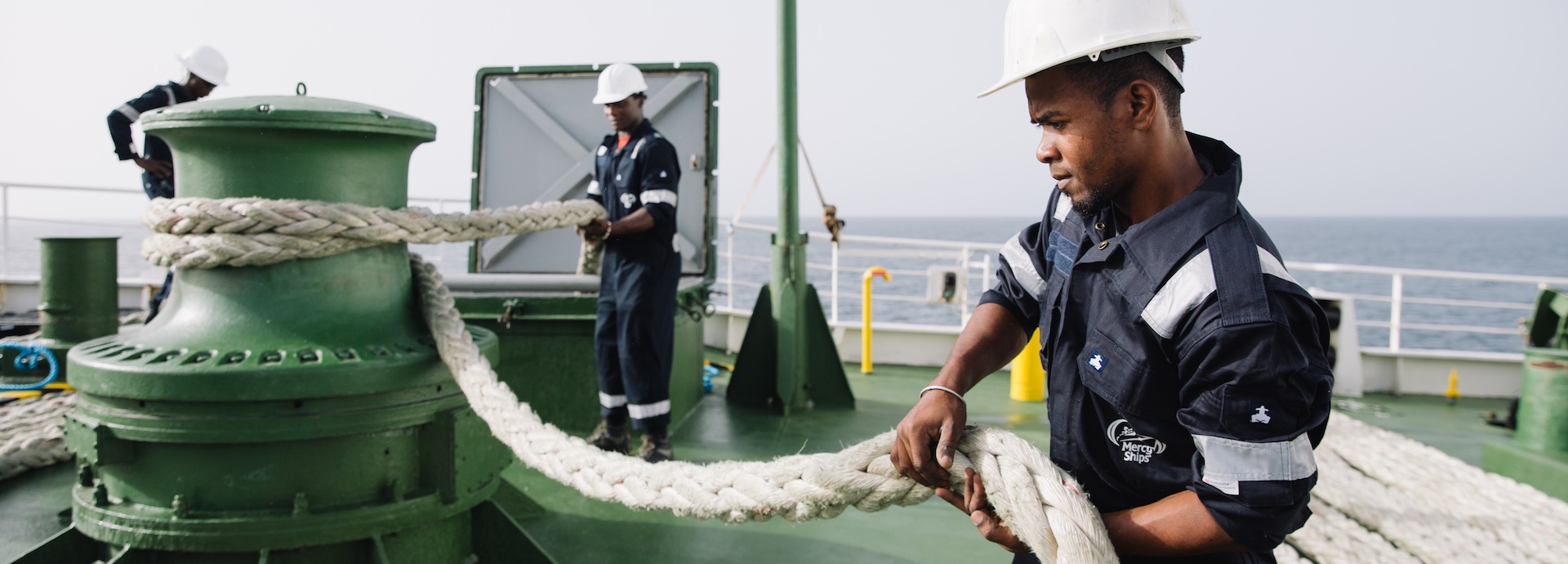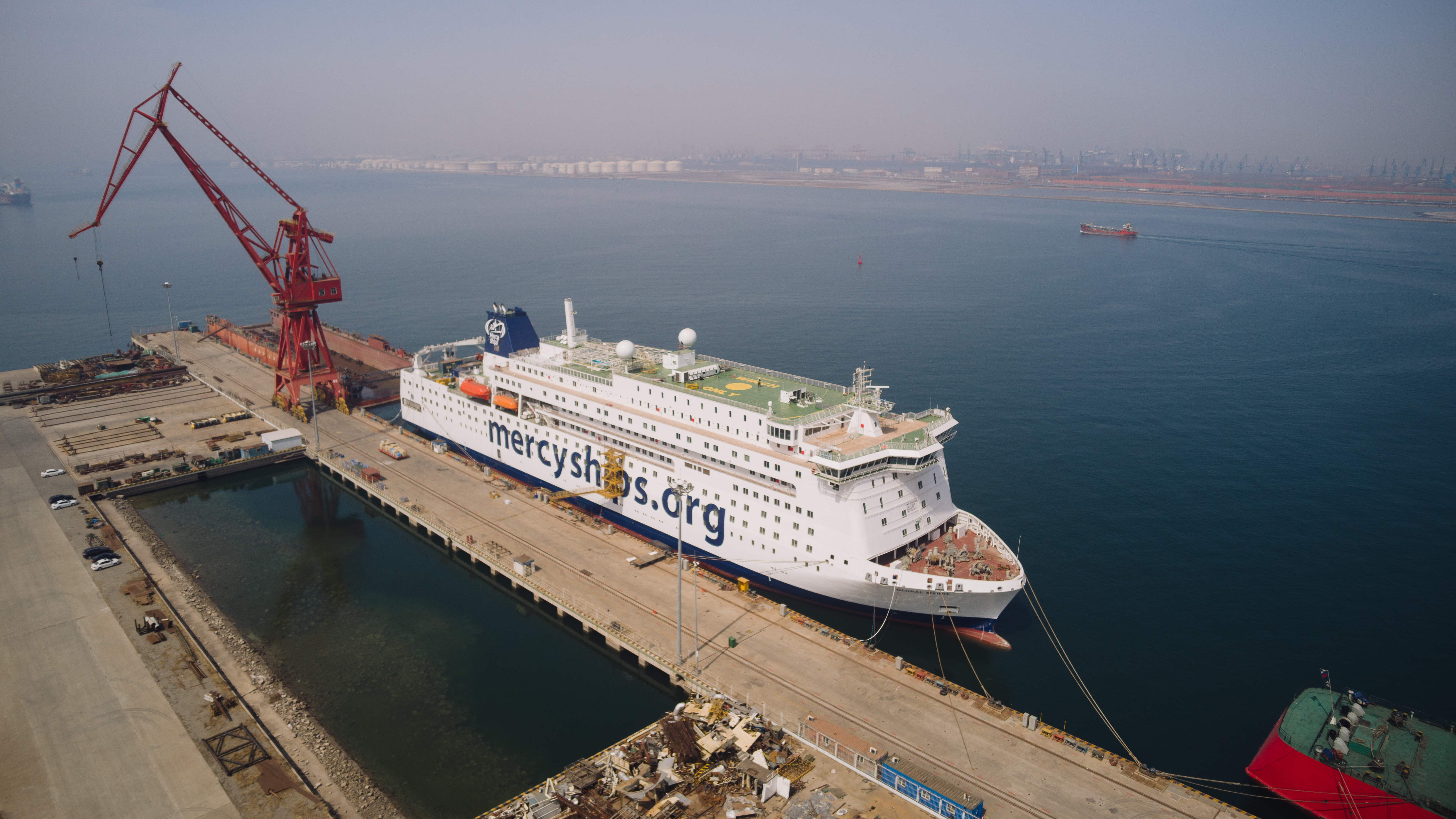
Podcasts

The ‘Mercy Ships’ initiative provides developing countries with much needed medical help through hospital vessels. I sat down with Robert Corley, Chief Operating Officer at Mercy Ships to get a better understanding of the organisation’s operations and goals.
Robert, what led to the Mercy Ships idea coming into being?
Statistics will show you that nearly 5 billion people across the world lack access to proper medical and surgical care. Most times, it is due to poor infrastructure and insufficiently trained personnel. We are driven by our calling to provide world-class
health care in these regions, both through hospital ships and also a lot of onshore training and strategic partnerships. We really want to help partner countries equip, empower and enhance their medical infrastructure so that they are able to sustain
their activities by themselves. We have been doing this since 1978 and currently have two ships, the African Mercy which is a converted ferry and the Global Mercy which is a purpose-built vessel that is being outfitted as we speak.
Why did you decide to use hospital ships rather than on-ground medical facilities?
That is a great question and given the name Mercy Ships, you may think we use only ships. While an amazing amount of work happens onshore as well, bear in mind that 40% of the world’s population lives within 100 miles of a major port. If we focused only on-ground facilities, we would miss a major opportunity to address a gap. Our founder’s vision was to provide ships that bring that infrastructure to people and we have, through partnerships and investments, been able to grow our onshore practices as well. For example, the Gamal Dental school and clinic in Guinea has helped train and build dental practices throughout West Africa. At the end of the day, it is partnerships with a country’s healthcare professionals that make the model successful.
Talk to us about the people who work on these vessels. Am I right in thinking that most of them are volunteers from a diverse set of backgrounds?
Yes, and our volunteers are amazing. They come from over 60 nations and from all walks of life. They join and volunteer with us at their own expense and most of the time, they raise their own funds, making personal sacrifices to serve people they don’t know. You got mariners, physicians, nurses, electricians, IT professionals, communication experts. you name it. We have also got professional chefs and a fully accredited school on board. This is important because many of the volunteers bring their children with them. If you think about it, it is a bit like a floating city in that we have all the infrastructure of one but with a primary focus on providing healthcare. To date, we have over 23,000 alumni who have served on a Mercy Ship at some point in time and continue to stay connected.

That’s pretty awesome. What impact did the COVID-19 pandemic have on your operations?
The pandemic is one of those things that kept me up at night, trying to figure out exactly how to navigate through the policies, procedures and travel restrictions that were imposed. Like many organisations when it first hit, you know, we thought about the safety of our patients, our providers, and the crew. Initially, we paused our services on the ships while the world tried to sort itself out. But as time drew on, we realised it could be a while. We decided to use the opportunity to take the Africa Mercy for a refit and wait for the new ship, the Global Mercy to come online. But rather than stopping our work, I think the pandemic also amplified our resolve to go and serve. We increased our partnerships, we put physicians in countries, and we really made sure the mission stayed alive to help those in need.
So what kind of work goes into setting up a hospital ship at a new harbour?
There's definitely a lot to it. The work has to start years in advance. We are now out scouting for what we're going to be doing in 2023 and 2024. We have got to really understand the partnerships and the needs of the different countries and that comes with working alongside the people there. We have country engagement teams that work with our partners. They evaluate candidate patients, determining surgical and healthcare needs and put together a plan of how we can best serve a country. And really, what we do is create a customised plan to serve the people based on what their needs are. In addition to healthcare preparation, you’ve got to determine the surgeries and the number of resources that you might need in order to deliver the requisite health care. But then, you also have the port side of operations. Not only do I have to make sure that I can get a ship to a location, I also have to determine if there is adequate space and resources and even room on the pier, to be able to run the hospital. Once we have the operational and healthcare needs sorted, we need to ensure that we have the volunteers both on the ship and also in the country to make it all work. It takes a lot of people and the process is pretty big and complicated, but once it all comes together, it is pretty phenomenal really.
That is phenomenal. Do you have any data on the kind of impact the Mercy Ships organisation has had so far?
Let me give you a few numbers to chew on it. Since 1978, when the organisation was founded, we have performed more than 105,000 life-changing surgeries and over 488,000 dental procedures. Many of those who have had procedures or surgeries have come back to serve or help others in their local communities. We have trained more than 6,600 healthcare professionals who in turn have trained other people in their communities. We have had over 1,100 medical infrastructure development projects, which then provided support to others as well. It's really an immeasurable ripple effect. You know, if you think about it, you may not be able to change the life of every person in the world, but we can change the world for one person at a time. And then they can change the life of someone else.
Let’s take a look at the new ship, the Global Mercy. Am I right in thinking it is only going to help scale up your operations even further?
Indeed. The Global Mercy, when you see it alongside the Africa Mercy, you'll notice it's much larger. The Africa Mercy, as I mentioned earlier is a converted ferry, and in many ways, there were space constraints etc. The Global Mercy, being purpose-built is longer and wider, allowing us to have more volunteers, more operating rooms and recovery wards. We have also got more storage and overall space. More room really means more impact. We get state-of-the-art simulation labs and classrooms that provides training for lab and biomedical technicians, and really takes the training aspect of what we do in terms of medical capacity building to the next level. From a technical standpoint, the new ship is more manoeuvrable and more energy efficient. Overall, it's an opportunity to double our impact on the world. It's a fantastic vessel.
This interview has been abridged. To hear the complete conversation, please listen to the podcast.
